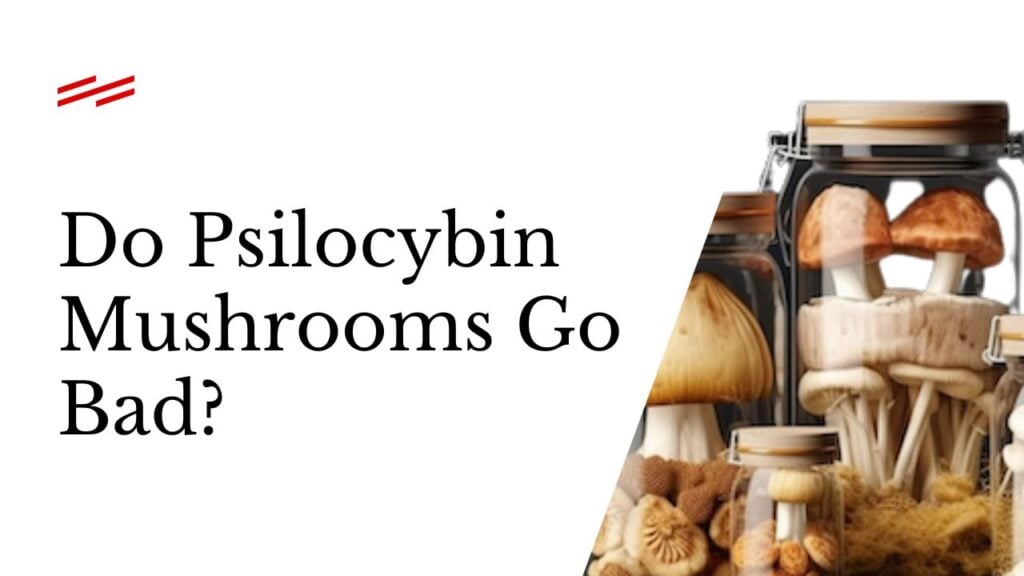
This article has been medically reviewed by Katrina Oliveros, MSN-ED, BSN
Maria Katrina is a trauma-informed Wellness Educator and Psychedelic Harm Reduction Consultant. Beyond nursing, she supports health & wellness teams through medical aid, psychedelic harm reduction, and integration services.
Getting started
Whether psychoactive or not, mushrooms are organic matter, and organic matter decays. That’s why people over the centuries have developed a plethora of different methods to keep mushrooms fresh and tasty for as long as possible, from proper storage and refrigeration to dehydrating and preserving in jars.
In this article, we’ll give you an overview of how to store edible mushrooms of all kinds, starting with the standard crimini and other edibles, before proceeding to the psychedelic psilocybin-containing varieties.
What’s the Best Way to Store Mushrooms?
While many of the same principles apply for all fungi, the best storage method will depend on how and when you want to eat your ‘shrooms. Of course, sooner is always better than later when it comes to fresh produce from the grocery store or farmer’s market, but dried psilocybin mushrooms may be preferred for greater precision when measuring a dose.
As a general rule of thumb, however, you should store mushrooms in the fridge, provided you plan to eat the mushrooms fresh in the near future.
How Long Are Fresh Mushrooms Good For?
Mushrooms are highly perishable due to their lack of protective cuticle layer, making them susceptible to rapid quality degradation including moisture loss, color changes, textural changes, microbial deterioration, and loss of nutrients and flavor.
This results in a shelf life of only 1-3 days at room temperature or 5-7 days under refrigeration. For every hour mushrooms are left out, about eight hours are shaved off their overall shelf life, so get them in the fridge as soon as possible to reduce spoilage.
But again, this answer can vary between different varieties or even different batches of the same mushroom. One factor to note is the mushrooms’ size, as larger caps like portobello or crimini survive longer than smaller kinds like button mushrooms or magic mushrooms. Similarly, whole mushrooms last longer than sliced ones since they have less surface area exposed.
What Should You Store the Mushrooms In?
Unlike most vegetables, mushrooms should NOT be sealed in plastic wrap or another airtight container.
Most mushrooms have a high water content of about 80-90% of their total volume, so they need plenty of air circulation to keep from getting soggy. That’s why shrink-wrapped packages of mushrooms from the grocery store have holes poked into the plastic wrap. They can be kept in the original packaging in this case.
For wild fungi like morel mushrooms or the many outdoor varieties of Psilocybe cubensis, you’ll likely need to provide your own packaging. You could fashion a perforated plastic wrap to hold the loose mushrooms, but a simple brown paper bag is easier and just as effective.
Paper absorbs the mushrooms’ excess moisture, whereas plastic traps it, which causes the mushrooms to become slimy sooner. Wrapping the mushrooms in a paper towel can also help prevent sogginess.
In addition, avoid the crisper drawer of your fridge for storing mushrooms, as this compartment provides less air circulation and compounds moisture.
Can You Freeze Mushrooms?
Yes, but it’s not preferred.
In freezing, mushrooms lose some of their nutritional value and suffer in texture. Compared to fresh mushrooms, frozen mushrooms will have fewer vitamins and minerals and a potentially mushier mouthfeel. They’re still a valuable ingredient but work better for blending into dishes where they’re not as prominently featured, like soups or stir-fries.
To freeze mushrooms:
- For best results, freeze mushrooms at the peak of their freshness, brushing off any visible dirt. Avoid thorough washing to prevent waterlogging.
- Arrange the sliced or whole mushrooms on a baking tray in a single layer without touching and place them in the freezer.
- Wait for one to two hours before transferring the frozen mushrooms to a freezer-safe bag with all the air pressed out.
- When ready to use, cook the mushrooms directly from frozen rather than defrosting to avoid sogginess.
Alternatively, you can cook mushrooms before freezing by sauteing or steam blanching. Once cooled, freeze the blanched or sauteed mushrooms using the same method described above. This preparation gives the dual advantage of having a readymade mushroom side and preserving their nutrients.
When it comes to magic mushrooms, only freeze them when dried, or else the psychoactive substances will break down under sub-zero conditions. In any case, freezing mushrooms within three months of harvesting or buying them is best.
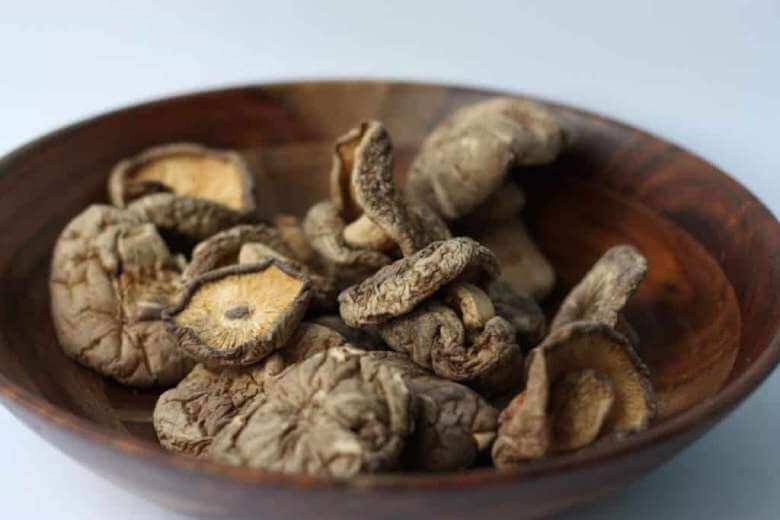
Grow 1 Year's Worth of Microdoses in Just 6 Weeks
Third Wave partnered with top mycologists to create the world’s easiest and best mushroom growing program (kit, course, and expert support).
- Pre-sterilized and sealed
(ready to use out of the box) - Step-by-step video and text course
- Access to growing expert in community
- Make your first harvest in 4-6 weeks
- Average yield is 1 - 4 ounces (28-108g)
- Fits in a drawer or closet
- Enter info for Third Wave discounts:
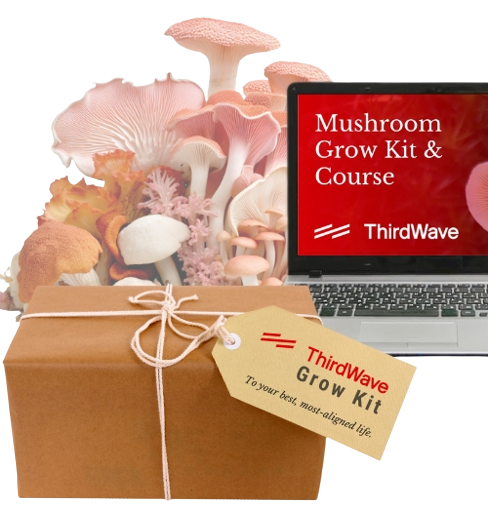
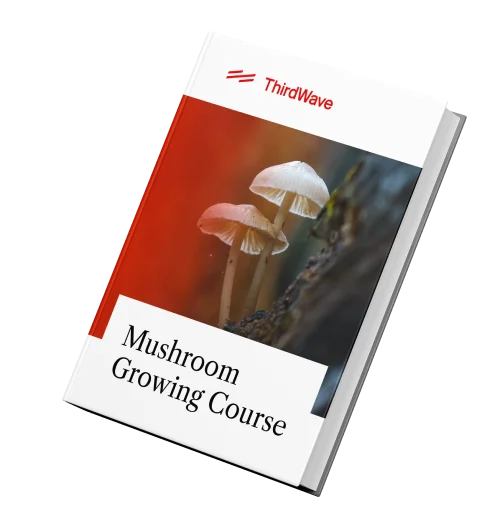
Grow 1 Year's Worth of Microdoses in Just 6 Weeks
Third Wave partnered with top mycologists to create the world’s easiest and best mushroom growing program (kit, course, and expert support).
- Pre-sterilized and sealed
(ready to use out of the box) - Step-by-step video and text course
- Access to experts in community
- Make your first harvest in 4-6 weeks
- Average yield is 1 - 4 ounces (28-108g)
- Fits in a drawer or closet
- Enter info for Third Wave discounts
How to Dry Mushrooms
Drying mushrooms is a great way to make them last longer without sacrificing their taste or nutritional value, and only slightly compromising their texture. The easiest way to dry them is using a dehydrator:
- Check the mushrooms’ freshness and wipe clean with a damp paper towel.
- Slice larger mushrooms to a uniform thickness, allowing them to dry evenly throughout.
- Arrange mushrooms in a single layer on a dehydrator tray as close as possible without letting them touch. Overlapping mushrooms will cause them to retain moisture and prevent them from drying properly.
- Heat the dehydrator to 110-120°F and leave mushrooms in until crispy – about six to eight hours for quarter-inch thick slices, or up to ten hours for larger ones. The pieces should be bone-dry and break when bent.
- Remove and let cool to room temperature before storing in a sanitized glass jar with an airtight lid. Store away from heat or light and ideally enjoy within one month.
How to Cook Mushrooms After You’ve Dried Them
Dried mushrooms (non-magic, wild mushrooms) can substitute for fresh ones in virtually any recipe, but first you’ll have to rehydrate them.
To do so, place the desired amount of mushrooms in a heatproof bowl, submerge them in boiling water, and let sit for 20 to 30 minutes. Drain and save the leftover water as mushroom broth to use in your recipe or the next soup you make.
Here are a few mushroom recipes to inspire your cooking, whether you’re starting with fresh or dried:
- Stuffed Portobello Mushrooms With Roast Tomatoes and Goat Cheese
- Porcini and Shiitake Gorgonzola Chicken Pasta
- Creamy Chicken and Mushroom Soup
- Mushroom, Sweet Potato, and Smoked Gouda Chowder
How to Store Magic Mushrooms
Like their non-psychoactive relatives, fresh psilocybin mushrooms should be stored in paper or perforated plastic. Magic mushrooms can stay good in the fridge at 35-40°F for up to two weeks on average. You can wash or dab them with cold water to remove any dirt before storing them without losing any of their psychoactive potency, but dry them as best as possible to prevent absorption of excess moisture.
If you have fresh magic mushrooms but aren’t prepared to take them in the immediate future, consider drying them. Drying allows you more time to wait for the optimal set and setting and more precision to portion out doses for microdosing. Beginners to this form of psychedelic healing can turn to Third Wave’s microdosing course for guidance, which provides a proven, science-based structure to help you reap the benefits from this self-optimization modality, whether you’re looking to break negative thought cycles or enhance creativity.
On the other hand, if you’re having trouble finding magic mushrooms in the first place, Third Wave’s Grow Kit can empower you to make your own medicine. The expert-curated, three-phase process supplies almost everything you need to raise psilocybin from spore to mushroom in as little as four weeks.
How to Dry Magic Mushrooms
The three main ways to dry magic mushrooms are air-drying, dehydrating, or desiccating. Whichever way you choose, the first step is pre-drying the shrooms to remove excess water and prevent contamination:
- Arrange mushrooms on a piece of cardboard or dry towel, evenly spaced without touching.
- Place cardboard or towel in a well-ventilated area without direct sunlight, potentially in front of a fan for constant airflow.
- Let sit for several hours until wrinkly in appearance and rubbery to the touch.
Now you’re ready to complete the drying process.
Air-drying is the easiest method, requiring little to no equipment or advanced preparation. However, this only works in environments with 55% or less humidity and takes up to two days. Just continue the pre-drying process, checking intermittently until the mushrooms are dry enough throughout to snap when bent.
On the other hand, using a dehydrator will ensure the mushrooms dry evenly in less time while minimizing the risk of contamination. Spread your pre-dried shrooms on the dehydrator sheet and cook at a temperature of 110°F, low enough to keep the psychoactive compounds intact. Dehydrate for four to eight hours, checking every hour, until mushrooms are bone dry.
The final method for drying is using a desiccant, meaning a substance that absorbs water from the atmosphere around it, like the silica gel packs included with many industrial products and readymade snacks.
To prepare a homemade desiccant, all you need is Epsom salt, a hammer, and an oven:
- Fill a baking tray with a thin layer of Epsom salt.
- Bake at 475°F for two hours.
- Remove and immediately use a hammer to break the salt sheet into pieces. The longer you wait after removing it from the oven, the more moisture the desiccant will begin to absorb from the air around it.
- Place hardened salt flakes into airtight containers while still hot.
Now, to use the desiccant to dry your magic mushrooms:
- Pour a layer of desiccant into the bottom of an airtight plastic container.
- Cover with paper towels and create a platform using a sturdy metal mesh to keep the shrooms from coming into direct contact with the desiccant.
- Place the shrooms atop the mesh and secure the lid above.
- Check mushrooms every day until dry enough to snap when bent.
Grow 1 Year's Worth of Microdoses in Just 6 Weeks
Third Wave partnered with top mycologists to create the world’s easiest and best mushroom growing program (kit, course, and expert support).
- Pre-sterilized and sealed
(ready to use out of the box) - Step-by-step video and text course
- Access to growing expert in community
- Make your first harvest in 4-6 weeks
- Average yield is 1 - 4 ounces (28-108g)
- Fits in a drawer or closet
- Enter info for Third Wave discounts:


Grow 1 Year's Worth of Microdoses in Just 6 Weeks
Third Wave partnered with top mycologists to create the world’s easiest and best mushroom growing program (kit, course, and expert support).
- Pre-sterilized and sealed
(ready to use out of the box) - Step-by-step video and text course
- Access to experts in community
- Make your first harvest in 4-6 weeks
- Average yield is 1 - 4 ounces (28-108g)
- Fits in a drawer or closet
- Enter info for Third Wave discounts
How to Store Dry Magic Mushrooms
Dried shrooms can last in storage for several years with no significant loss of potency. All you need to do is keep them in an airtight environment without exposure to heat, light, or moisture. Since plastic lets air in faster, we recommend using a glass jar.
Making Tea from Magic Mushrooms After Drying
Mushroom tea is the preferred method of psilocybin consumption for many, as it imparts a pleasant flavor and reduces symptoms of nausea after ingesting. This preparation also lets you add other herbal ingredients like chamomile, lavender, peppermint, hibiscus, honey, ginger, lemon peel, or even non-psychoactive medicinal mushrooms like lion’s mane or reishi.
Like lemon tekking, pouring boiling water over magic mushrooms essentially cooks them into a psilocybin extract. This can trigger a more rapid come-on for the experience, especially if the mushrooms are powdered, exposing more surface area for faster absorption in the intestines. Therefore, we recommend reducing your dose slightly when first trying this method.
To powder mushrooms and prepare them into a mushroom tea:
- Weigh out your desired dose of mushrooms
- Grind into a powder using a coffee or cannabis grinder. Wait to open the grinder several minutes after grinding to prevent your powder from dispersing into the air.
- Transfer powder to a mug or strainer with other desired ingredients for tea.
- Pour boiling water over the powder and let sit for ten to fifteen minutes.
- Optional: strain out mushroom powder bits before drinking to further reduce nausea.
- Add honey or other sweeteners to taste and enjoy.
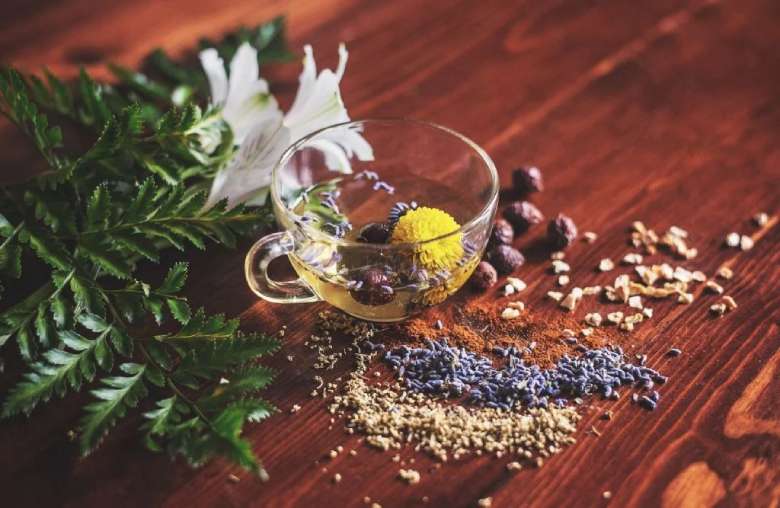
How to Store Mushroom Capsules
When it comes to microdosing, making powdered mushroom capsules is unquestionably the way to go for consistency. Powdering shrooms homogenizes the psychoactivity that otherwise varies between mushroom stems and caps. However, keep each crop of mushrooms in separate batches to ensure a reliable dosage, making note of the strain and date of preparation on their packaging.
After preparing your capsules (find out how here), store them in a dark, dry, airtight container like a jar, pill bottle, or film canister. Another option is soda bottles, which are designed to retain gas pressure. Avoid plastic bags, which are breathable enough to accumulate water vapor.
The lower the temperature they’re stored at, the better. Mushroom capsules can last for months in the closet, a year in the fridge, and ten years or more in the freezer.
Master the Skill of Microdosing
Enter your info to start your journey on Third Wave's Microdosing Course! Discover a science-based framework for transformational microdosing.
"The course gave me hope, a new way from what I've read and researched before. It has content which any reader can relate to whether you're an addict, an alcoholic or someone suffering from depression or other mental or spiritual ailments. I now feel empowered to take responsibility for my life!"
-Melissa P.
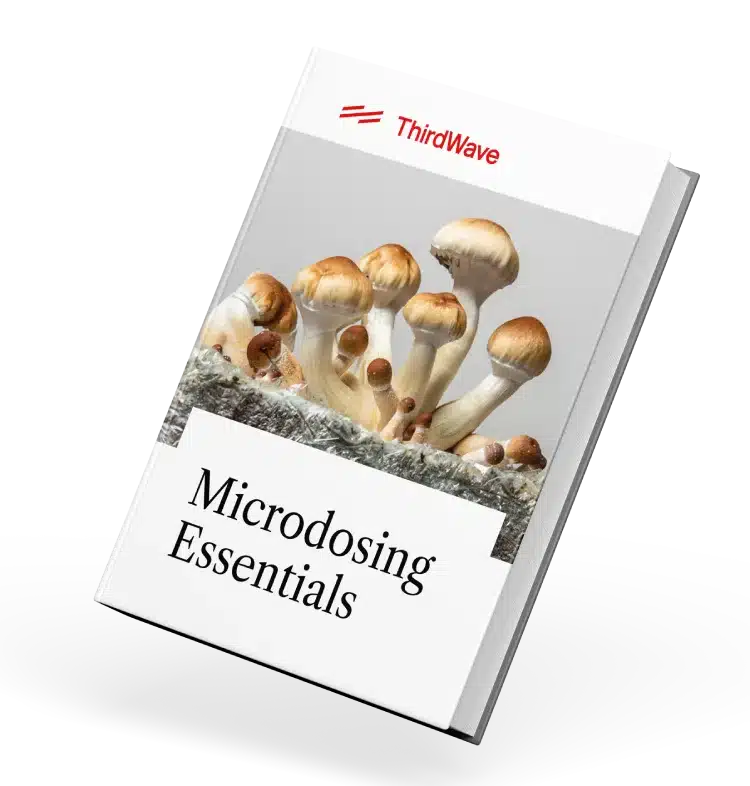

Master the Skill of Microdosing
Enter your info to start your journey on Third Wave's Microdosing Course! Discover a science-based framework for transformational microdosing.
"The course gave me hope, a new way from what I've read and researched before. It has content which any reader can relate to whether you're an addict, an alcoholic or someone suffering from depression or other mental or spiritual ailments. I now feel empowered to take responsibility for my life!"
-Melissa P.
How to Preserve Mushrooms in Jars
Another popular way to preserve edible mushrooms is by canning them in jars with olive oil and other ingredients to impart flavor. Preserving psychedelic mushrooms in liquid honey creates a concoction called “shroom honey” or “blue honey”. A natural preservative used for thousands of years, honey draws moisture out of the mushrooms through osmosis and protects against bacterial contamination with its high sugar content.
To make blue honey, start with dried psilocybin mushrooms and follow these simple instructions:
- Chop or grind the mushrooms using scissors or a grinder to the desired size. Having smaller pieces or powder is preferable to create a more psychoactively concentrated honey.
- Place mushroom pieces in a sealable glass container and pour liquid honey over until completely coated.
- Seal and store jars in a dark, dry area for up to four months, checking for mold intermittently.
Mushrooms may be perishable, but with the proper planning and preparation, there’s no shortage of ways to keep them from going bad before you get to enjoy them. When fresh, the main point to remember is to let the mushrooms breathe, so they won’t get slimy and shriveled soaking in their own moisture.
If you can consume them within a week of buying, foraging, or harvesting, then storing them in a paper bag or breathable plastic container in the fridge will do just fine. To save shrooms for longer, freezing, drying, or canning them will extend their shelf life for several months, only slightly compromising their texture and nutritional value.
Much the same goes for magic mushrooms, but they can also be made more palatable and shelf-stable by grinding them into a powder and putting them in pill capsules or preserving them in honey. Ultimately, which storage method works best depends on which mushrooms you’re using and what you hope to get out of them: potency, flavor, freshness, or perhaps all of the above.

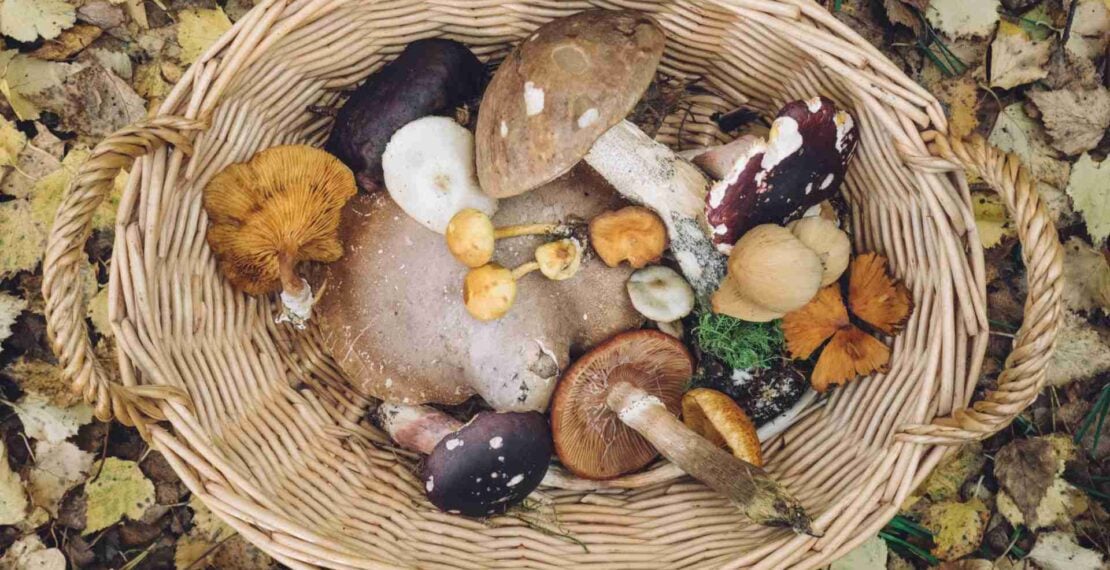
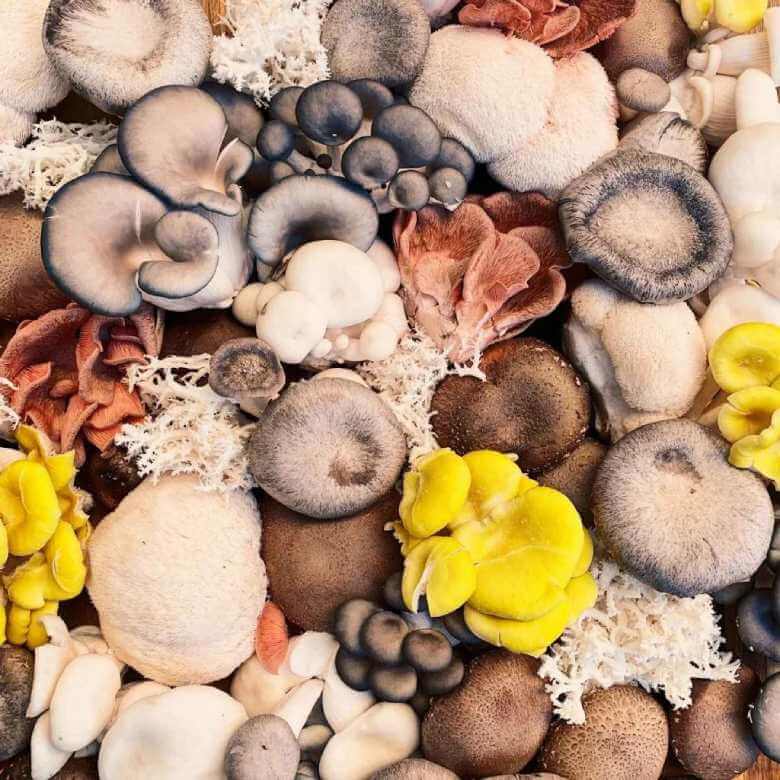
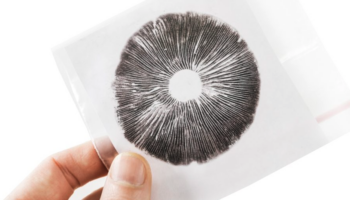





magic mushrooms should be legalised everywhere lol
Look into the real law. You’ll discover that they are legal. It all depends on your behavior towards other sentient beings. It’s simple. Mark Passio has the best documentary on the subject, as well as in depth podcasts and presentations on various aspects of human psychological experiences.
I would like to know how long the magic mushroom will last inside the bag after they have grown to thier full bloom. (Example- let’s say I start the growing process and a couple of weels in I have to go out of town and they start blooming before I get back.) How long can they be left in the bag?
Hi Gina. Fresh magic mushrooms will start to rot after just a few days if you don’t store them properly. We recommend putting them in Mason Jars or Vacuum Sealed Bags as soon as possible.
Grinded and steeped psylocybin mushrooms last weekend, jarred it and pit in fridge for a week. Is it still safe to drink?
if using the lemon tek method to make them into gummies how long will they last in the fridge? this was my first time making the gummies and i’m a bit nervous about the shelf life.
Hi MC – they should last about 6 months to a year.
hello there, how long should psilocybin extract last in a fridge?
many thanks
Hi Greg – It should last for 6-12 months in the refrigerator.
excellent, many thanks
Ok so I have a freeze dryer. How would that effect the psychoactive affect of the mushrooms. It should be more potent per gram because all the water is out but would the freeze drying process affect the psychoactive component.
I would recommend you join our free, private community and post the question there. There are so many experts who will be glad to answer these questions: https://community.thethirdwave.co/
Thanks,
Dorth Raphaely
Third Wave GM.
The preservation method is amazing.
Can I store my magic mushroom powder after grinding and how would I do it?
Very informative thank you
If you store powdered mushrooms and dried lemon peels in the same bag will the lemon peels break down the psilocybin too much therefore reducing the potency? Or does the acidity of the lemon only affect the mushrooms once hydrated? Thanks
My shroom powder got wet and is looking dark. Is there a way to salvage them?
If you make tea how long does the tea last for?
Can you freeze dry them?